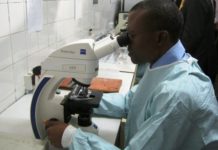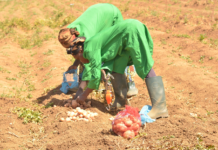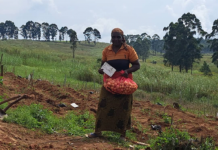Time delays worsened last year’s outbreak of cerebrospinal meningitis which killed 877 people across Zamfara, Sokoto and Yobe, the Nigeria Centre for Disease Control says.
A team of 11 researchers who published a paper on PlosOne on Nigeria’s response to the outbreak documented delays in detection and notification of the outbreak, in requesting for vaccines and their arrival from ICG, and in initiating reactive vaccination.
A study of situation reports from rapid response teams showed it took an “average time of three weeks before the outbreaks were detected and notified to NCDC.”
Four weeks after receiving notification, an integrated response coordinating centre was set up by NCDC and requests for vaccines were sent to International Coordinating Group (ICG) on vaccine provision, they wrote.
While it took ICG one week to approve the requests, it took an average of two weeks for approximately 41% of requested vaccines to arrive.
On the average, it took nine weeks from the date the epidemic threshold was crossed to commencement of reactive vaccination in the three states, the paper said.
“Our findings suggest that there were delays in 4 critical areas in responding to the outbreak: detection and reporting of early cases of meningitis at state and local government levels, initiating a national coordinating body to respond to the multi-state meningitis outbreaks, requesting for vaccines from ICG and in commencing reactive vaccination campaigns in affected areas,” said lead author Assad Hassan, of the Nigeria Field Epidemiology and Laboratory Training Programme.
“Minimising delays in these four areas might help in rapid response to future outbreaks.”
A previously unrecorded strain of meningitis was responsible for the 2016/17 outbreak, for which vaccine wasn’t readily available, making response even more complex.
“Our most recent publication described some of these processes that led to a delay in response activities,” said NCDC chief executive officer Chikwe Ihekweazu.
“At the beginning of the outbreak there was a poor detection rate, we had to begin a process to request for the vaccines which also depended on the detection rate and other factors.”
“We have already begun building on lessons from the delays experienced in the 2016/2017 meningitis outbreak. This year, we have seen 77% less cases of meningitis than was seen in 2017. We were better prepared having ramped up diagnostic services across the country.
“In 2016 the National Reference Laboratory was being set up as the outbreak began. This year, we have improved our diagnostic capacity and increased the detection rate in a timely manner.
“In addition, we have set up a National Incident Coordination Centre and gone ahead to support States in the establishment of Public Health Emergency Operations Centres.
“Zamfara being the epicentre of the 2016/2017 outbreak was part of the first EOC project roll out.
“We have strengthened our digital surveillance system and continue to train state surveillance officers to ensure early reporting of cases.
“We are in a better place now than we were in 2016/2017.”
Source: Daily Trust























